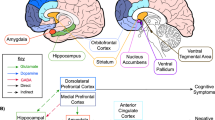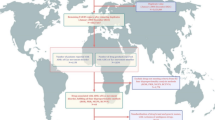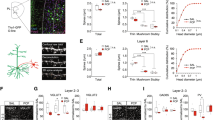Abstract
Smooth pursuit eye movement (SPEM) and antisaccade deficits are observed in the schizophrenia spectrum and have been used to study the pathophysiology as well as the genetic basis of this condition. The neurotransmitter acetylcholine has been implicated in a number of cognitive processes thought to underlie SPEM and antisaccade performance. This study investigates effects on eye movements of procyclidine, an anticholinergic drug often administered to schizophrenic patients. A total of 13 patients completed a double-blind placebo-controlled crossover design, receiving 15 mg procyclidine and placebo. Seven participants received procyclidine first and placebo second, six participants were tested in the reverse order. SPEM and antisaccade (as well as fixation and prosaccade) eye movements were recorded using infrared oculography. Results showed that procyclidine overall, relative to placebo, mildly worsened SPEM performance, as indicated by nonsignificantly reduced gain (p=0.08) and increased frequency of intrusive anticipatory saccades during pursuit (p=0.06). A significant interaction of group and order of administration indicated that procyclidine increased the rate of antisaccade reflexive errors only when administered first; the opposite pattern was observed when placebo was administered first, likely due to the operation of practice effects at second assessment. These findings indicate that acute administration of a clinically relevant dose of procyclidine leads to mild impairments in eye movement performance in schizophrenic patients, suggesting the need to consider this compound in oculomotor studies in schizophrenia. The action of this anticholinergic drug on oculomotor performance is consistent with the hypothesized role of the cholinergic system in the cognitive mechanisms of attention and working memory, processes thought to underlie SPEM and antisaccade performance. Effects of order of administration and practice on the antisaccade task suggest that these factors need to be taken into consideration in future pharmacological studies.
Similar content being viewed by others
Log in or create a free account to read this content
Gain free access to this article, as well as selected content from this journal and more on nature.com
or
References
Aizawa H, Kobayashi Y, Yamamoto M, Isa T (1999). Injection of nicotine into the superior colliculus facilitates occurrence of express saccades in monkeys. J Neurophysiol 82: 1642–1646.
Beecher HK (1959). Measurement of Subjective Responses: Quantitative Effects of Drugs. Oxford University Press: New York.
Beiser M, Bean G, Erickson D, Zhang J, Iacono WG, Rector NA (1994). Biological and psychosocial predictors of job performance following a first episode of psychosis. Am J Psychiatry 151: 857–863.
Bond AJ, Lader MH (1974). The use of analogue scales in rating subjective feelings. Br Med J 47: 211–218.
Braff DL, Geyer MA, Swerdlow NR (2001). Human studies of prepulse inhibition of startle: normal subjects, patient groups, and pharmacological studies. Psychopharmacology (Berl) 156: 234–258.
Brocks DR (1999). Anticholinergic drugs used in Parkinson's disease: an overlooked class of drugs from a pharmacokinetic perspective. J Pharm Pharm Sci 2: 39–46.
Broerse A, Crawford TJ, den Boer JA (2001). Parsing cognition in schizophrenia using saccadic eye movements: a selective overview. Neuropsychologia 39: 742–756.
Calkins ME, Iacono WG (2000). Eye movement dysfunction in schizophrenia: a heritable characteristic for enhancing phenotype definition. Am J Med Genet 97: 72–76.
Carpenter RHS (1988). Movements of the Eyes. Pion: London.
Clementz BA (1998). Psychophysiological measures of (dis) inhibition as liability indicators for schizophrenia. Psychophysiology 35: 648–668.
Clementz BA, Sweeney JA, Hirt M, Haas G (1990). Pursuit gain and saccadic intrusions in first-degree relatives of probands with schizophrenia. J Abnorm Psychol 99: 327–335.
Cohen J (1988). Statistical Power Analysis for the Behavioral Sciences. Lawrence Earlbaum Associates Inc.: Hillsdale, NJ.
Coull JT (1998). Neural correlates of attention and arousal: insights from electrophysiology, functional neuroimaging and psychopharmacology. Prog Neurobiol 55: 343–361.
Crawford TJ, Haeger B, Kennard C, Reveley MA, Henderson L (1995a). Saccadic abnormalities in psychotic patients. I. Neuroleptic-free psychotic patients. Psychol Med 25: 461–471.
Crawford TJ, Haeger B, Kennard C, Reveley MA, Henderson L (1995b). Saccadic abnormalities in psychotic patients. II. The role of neuroleptic treatment. Psychol Med 25: 473–483.
Crawford TJ, Henderson L, Kennard C (1989). Abnormalities of nonvisually-guided eye movements in Parkinson's disease. Brain 112(Part 6): 1573–1586.
Crawford TJ, Sharma T, Puri BK, Murray RM, Berridge DM, Lewis SW (1998). Saccadic eye movements in families multiply affected with schizophrenia: the Maudsley Family Study. Am J Psychiatry 155: 1703–1710.
Dépatie L, O'Driscoll GA, Holahan AL, Atkinson V, Thavundayil JX, Kin NN et al (2002). Nicotine and behavioral markers of risk for schizophrenia: a double-blind, placebo-controlled, cross-over study. Neuropsychopharmacology 27: 1056–1070.
Deutch AY, Roth RH (1999). Neurotransmitters. In: Zigmond MJ, Bloom FE, Landis SC, Roberts JL, Squire LR (eds). Fundamental Neuroscience. Academic Press: San Diego. pp 193–234.
Ettinger U, Kumari V, Crawford TJ, Davis RE, Sharma T, Corr PJ (2003). Reliability of smooth pursuit, fixation, and saccadic eye movements. Psychophysiology 40: 620–628.
Everitt BJ, Robbins TW (1997). Central cholinergic systems and cognition. Annu Rev Psychol 48: 649–684.
First MB, Spitzer RL, Gibbon M, Williams JBW (1996). Structured Clinical Interview for DSM-IV Axis I Disorders Research Version (SCID-I). State Psychiatric Institute, Biometrics Research: New York.
Francis PT, Palmer AM, Snape M, Wilcock GK (1999). The cholinergic hypothesis of Alzheimer's disease: a review of progress. J Neurol Neurosurg Psychiatry 66: 137–147.
Friedman JI, Temporini H, Davis KL (1999). Pharmacologic strategies for augmenting cognitive performance in schizophrenia. Biol Psychiatry 45: 1–16.
Gooding DC, Iacono WG, Beiser M (1994). Temporal stability of smooth-pursuit eye tracking in first-episode psychosis. Psychophysiology 31: 62–67.
Green JF, King DJ, Trimble KM (2000). Antisaccade and smooth pursuit eye movements in healthy subjects receiving sertraline and lorazepam. J Psychopharmacol 14: 30–36.
Harvey PD, Moriarty PJ, Serper MR, Schnur E, Lieber D (2000). Practice-related improvement in information processing with novel antipsychotic treatment. Schizophr Res 46: 139–148.
Hutton SB, Cuthbert I, Crawford TJ, Kennard C, Barnes TR, Joyce EM (2001). Saccadic hypometria in drug-naive and drug-treated schizophrenic patients: a working memory deficit? Psychophysiology 38: 125–132.
Katsanis J, Iacono WG, Beiser M (1996). Eye-tracking performance and adaptive functioning over the short-term course of first-episode psychosis. Psychiatry Res 64: 19–26.
Kay SR, Fiszbein A, Opler LA (1987). The positive and negative syndrome scale (PANSS) for schizophrenia. Schizophr Bull 13: 261–276.
Kennard C, Crawford TJ, Henderson L (1994). A pathophysiological approach to saccadic eye movements in neurological and psychiatric disease. J Neurol Neurosurg Psychiatry 57: 881–885.
Klein C, Fischer Jr B, Fischer B, Hartnegg K (2002). Effects of methylphenidate on saccadic responses in patients with ADHD. Exp Brain Res 145: 121–125.
Kristjánsson Á, Chen Y, Nakayama K (2001). Less attention is more in the preparation of antisaccades, but not prosaccades. Nat Neurosci 4: 1037–1042.
Kumari V (2000). A human perspective: commentary on Swerdlow et al, ‘Animal models of deficient sensorimotor gating: what we know, what we think we know, and what we hope to know soon’. Behav Pharmacol 11: 209–210.
Kumari V, Zachariah E, Galea A, Jones HC, Das M, Mehrotra R et al (2003). Effects of acute procyclidine administration on prepulse inhibition of the startle response in schizophrenia: a double-blind, placebo-controlled study. J Psychopharmacol 17: 95–101.
Kumari V, Zachariah E, Galea A, Mehrotra R, Taylor D, Sharma T (2001). Effects of procyclidine on prepulse inhibition of the acoustic startle response in healthy human volunteers. Psychopharmacology (Berl) 154: 221–229.
Kurtz MM, Moberg PJ, Mozley LH, Hickey T, Arnold SE, Bilker WB et al (2001). Cognitive impairment and functional status in elderly institutionalized patients with schizophrenia. Int J Geriatr Psychiatry 16: 631–638.
Leboyer M, Bellivier F, Nosten-Bertrand M, Jouvent R, Pauls D, Mallet J (1998). Psychiatric genetics: search for phenotypes. Trends Neurosci 21: 102–105.
Leigh RJ, Zee DS (1999). The Neurology of Eye Movements. Oxford University Press: Oxford.
Lencer R, Malchow CP, Krecker K, Nolte A, Pinnow M, von Siefart SZ et al (1999). Smooth pursuit performance in families with multiple occurrence of schizophrenia and nonpsychotic families. Biol Psychiatry 45: 694–703.
Leonard BE (1997). Fundamentals of Psychopharmacology. Wiley: Chichester.
Levy DL, Holzman PS, Matthysse S, Mendell NR (1994). Eye tracking and schizophrenia: a selective review. Schizophr Bull 20: 47–62.
McDowell JE, Clementz BA (1997). The effect of fixation condition manipulations on antisaccade performance in schizophrenia: studies of diagnostic specificity. Exp Brain Res 115: 333–344.
McGaughy J, Everitt BJ, Robbins TW, Sarter M (2000). The role of cortical cholinergic afferent projections in cognition: impact of new selective immunotoxins. Behav Brain Res 115: 251–263.
Mindham RH, Lamb P, Bradley R (1977). A comparison of piribedil, procyclidine and placebo in the control of phenothiazine-induced parkinsonism. Br J Psychiatry 130: 581–585.
Mitchell JP, Macrae CN, Gilchrist ID (2002). Working memory and the suppression of reflexive saccades. J Cogn Neurosci 14: 95–103.
Mori K, Yamashita H, Nagao M, Horiguchi J, Yamawaki S (2002). Effects of anticholinergic drug withdrawal on memory, regional cerebral blood flow and extrapyramidal side effects in schizophrenic patients. Pharmacopsychiatry 35: 6–11.
Müri RM, Heid O, Nirkko AC, Ozdoba C, Felblinger J, Schroth G et al (1998). Functional organisation of saccades and antisaccades in the frontal lobe in humans: a study with echo planar functional magnetic resonance imaging. J Neurol Neurosurg Psychiatry 65: 374–377.
O'Driscoll GA, Lenzenweger MF, Holzman PS (1998). Antisaccades and smooth pursuit eye tracking and schizotypy. Arch Gen Psychiatry 55: 837–843.
Ott J (1991). Analysis of Human Genetic Linkage. Johns Hopkins University Press: Baltimore/London.
Radant AD, Hommer DW (1992). A quantitative analysis of saccades and smooth pursuit during visual pursuit tracking. A comparison of schizophrenics with normals and substance abusing controls. Schizophr Res 6: 225–235.
Reulen JP, Marcus JT, van Gilst MJ, Koops D, Bos JE, Tiesinga G et al (1988). Stimulation and recording of dynamic pupillary reflex: the IRIS technique. Part 2. Med Biol Eng Comput 26: 27–32.
Roberts RJ, Hager LD, Heron C (1994). Prefrontal cognitive processes: working memory and inhibition in the antisaccade task. J Exp Psychol: General 123: 374–393.
Roitman SE, Keefe RS, Harvey PD, Siever LJ, Mohs RC (1997). Attentional and eye tracking deficits correlate with negative symptoms in schizophrenia. Schizophr Res 26: 139–146.
Ross DE (2000). The deficit syndrome and eye tracking disorder may reflect a distinct subtype within the syndrome of schizophrenia. Schizophr Bull 26: 855–866.
Ross RG, Olincy A, Harris JG, Radant A, Adler LE, Compagnon N et al (1999a). The effects of age on a smooth pursuit tracking task in adults with schizophrenia and normal subjects. Biol Psychiatry 46: 383–391.
Ross RG, Olincy A, Radant A (1999b). Amplitude criteria and anticipatory saccades during smooth pursuit eye movements in schizophrenia. Psychophysiology 36: 464–468.
Schwartz BD, Tomlin HR, Evans WJ, Ross KV (2001). Neurophysiologic mechanisms of attention: a selective review of early information processing in schizophrenics. Front Biosci 6: D120–D134.
Sharma T, Galea A, Zachariah E, Das M, Taylor D, Ruprah M et al (2002). Effects of 10 mg and 15 mg oral procyclidine on critical flicker fusion threshold and cardiac functioning in healthy human subjects. J Psychopharmacol 16: 181–185.
Sharma T, Harvey P (2000). Cognition in Schizophrenia. Oxford University Press: Oxford.
Spaulding WD, Fleming SK, Reed D, Sullivan M, Storzbach D, Lam M (1999). Cognitive functioning in schizophrenia: implications for psychiatric rehabilitation. Schizophr Bull 25: 275–289.
Spohn HE, Strauss ME (1989). Relation of neuroleptic and anticholinergic medication to cognitive functions in schizophrenia. J Abnorm Psychol 98: 367–380.
Stuyven E, Van der Goten K, Vandierendonck A, Claeys K, Crevits L (2000). The effect of cognitive load on saccadic eye movements. Acta Psychol (Amst) 104: 69–85.
Sweeney JA, Clementz BA, Haas GL, Escobar MD, Drake K, Frances AJ (1994). Eye tracking dysfunction in schizophrenia: characterization of component eye movement abnormalities, diagnostic specificity, and the role of attention. J Abnorm Psychol 103: 222–230.
Swerdlow NR, Braff DL, Geyer MA (2000). Animal models of deficient sensorimotor gating: what we know, what we think we know, and what we hope to know soon. Behav Pharmacol 11: 185–204.
Waxham MN (1999). Neurotransmitter receptors. In: Zigmond MJ, Bloom FE, Landis SC, Roberts JL, Squire LR (eds). Fundamental Neuroscience. Academic Press: San Diego. pp 235–267.
Whiteman PD, Fowle AS, Hamilton MJ, Peck AW, Bye A, Dean K et al (1985). Pharmacokinetics and Pharmacodynamics of procyclidine in man. Eur J Clin Pharmacol 28: 73–78.
Zachariah E, Kumari V, Galea A, Das M, Mehrotra R, Taylor D et al (2002). Effects of oral procyclidine administration on cognitive functions in healthy subjects: implications for schizophrenia. J Clin Psychopharmacol 22: 224–226.
Author information
Authors and Affiliations
Corresponding author
Additional information
Financial Support: AstraZeneca (UK) and Beit Memorial Foundation.
Rights and permissions
About this article
Cite this article
Ettinger, U., Kumari, V., Zachariah, E. et al. Effects of Procyclidine on Eye Movements in Schizophrenia. Neuropsychopharmacol 28, 2199–2208 (2003). https://doi.org/10.1038/sj.npp.1300286
Received:
Revised:
Accepted:
Published:
Issue date:
DOI: https://doi.org/10.1038/sj.npp.1300286
Keywords
This article is cited by
-
Synthesis and anti(myco)bacterial activity of novel 5,5-diphenylpyrrolidine N-aroylthiourea derivatives and a functionalized hexahydro-1H-pyrrolo[1,2-c]imidazole
Medicinal Chemistry Research (2017)
-
Medications influencing central cholinergic neurotransmission affect saccadic and smooth pursuit eye movements in healthy young adults
Psychopharmacology (2017)
-
The effects of ketamine and risperidone on eye movement control in healthy volunteers
Translational Psychiatry (2013)
-
Cholinergic blockade under working memory demands encountered by increased rehearsal strategies: evidence from fMRI in healthy subjects
European Archives of Psychiatry and Clinical Neuroscience (2012)
-
The antisaccade task as an index of sustained goal activation in working memory: modulation by nicotine
Psychopharmacology (2006)



